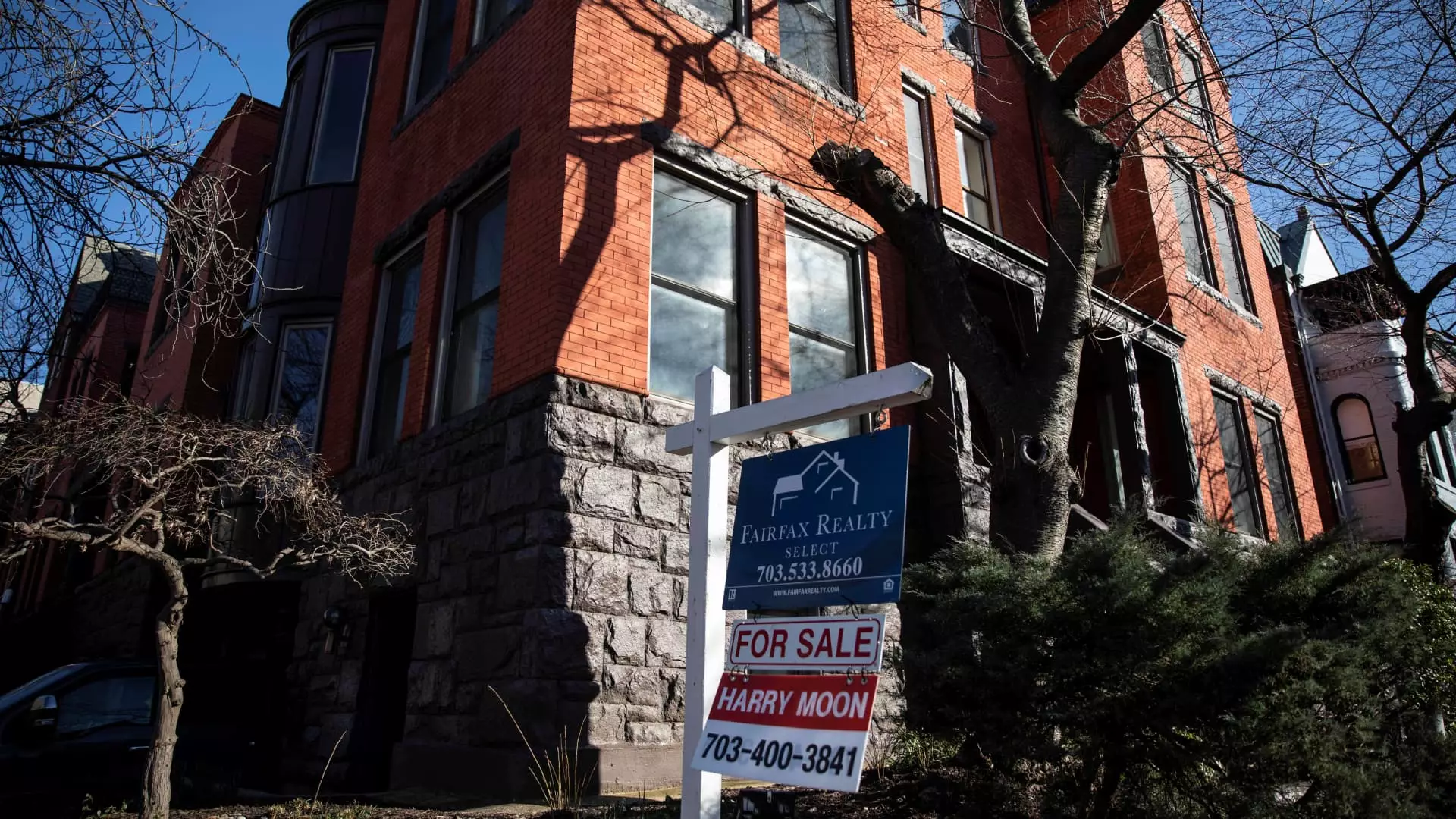The recent developments in the Washington D.C. metropolitan housing market have sparked discussions that are both urgent and deeply concerning. With a staggering 56% increase in active listings compared to the previous year, the region is experiencing an inventory surge that defies the historical norms typically associated with the annual real estate spring season. While rising inventory might seem like positive news for potential buyers, the underlying factors driving this surge present a troubling picture of economic uncertainty driven by fluctuating job markets and strategic decisions made by potential sellers.
Job Layoffs and Market Sentiment: The Elephant in the Room
The significant uptick in real estate inventory is closely linked to the economic turmoil resulting from federal layoffs and budgetary constraints that have impacted numerous local households. As Danielle Hale, chief economist at Realtor.com, pointed out, the uncertainties surrounding employment are causing many prospective home buyers to pause their search for properties. This cautious stance is not simply a symptom of the current market; it reflects broader anxieties about the stability of the nation’s capital, often perceived as a bastion of federal employment and economic resilience.
Furthermore, an increasing number of D.C. residents are reconsidering their housing needs in light of shifting job security. When federal employees or contractors are faced with potential layoffs, the psychology surrounding home buying alters dramatically. In essence, what we are witnessing is not just a temporary quirk in the market; rather, it can be seen as a complex response to economic fears that loom large in local consciousness. Such sentiments hint at more profound challenges that the housing market must navigate—a reality that goes beyond mere economic statistics.
New Construction and Inventory Growth: A Mixed Blessing
The rise in inventory is not solely attributed to sellers rushing to list their homes. Although new listings have risen year-over-year by 24%, this increase pales compared to the overall surge in inventory levels. Much of the current inventory increase can be traced back to a burgeoning number of newly constructed condominiums and townhomes. While this arrival of new housing stock might seem beneficial to potential first-time buyers, the underlying issue is more nuanced.
It’s critical to recognize that these new developments often cater to higher-end markets, skewing the affordability landscape in the D.C. area. The construction boom we’ve witnessed lacks a balanced supply, ignoring the pressing need for affordable housing options. Consequently, the increased availability of newly built properties leads us to question whether this is helping or simply exacerbating the existing affordability crisis.
The Pricing Paradigm: A Year-Over-Year Analysis
When examining pricing trends, the D.C. metro area reveals a 1.6% decrease in the median list price year-over-year. While this may be perceived as an opportunity for buyers, it’s crucial to dissect what these numbers truly represent. A significant factor contributing to the decline in prices is the increasing representation of smaller, lower-end homes in the market—a trend reflecting less favorable economic conditions.
Moreover, although the national median list price has slightly decreased, it creates an illusion of a burgeoning market that could lead first-time buyers to miscalculate their financial strategies. The 1.2% rise in the median price per square foot also indicates that despite lower overall prices, the competition for desirable homes remains robust. As such, buyers might find themselves trapped in a landscape where they must act decisively, even while facing uncertainty.
A Cross-Regional Overview: Implications for Similar Markets
Looking beyond D.C., other metropolitan areas with high concentrations of federal employment may soon find themselves experiencing similar shifts in housing dynamics. As such, we must be vigilant in assessing how D.C.’s trends can serve as a cautionary tale for other regions. The larger narrative reveals an unsettling dance between economic stability and housing availability, posing critical questions concerning future home buyer confidence and market sustainability.
Ultimately, the future of the D.C. housing market isn’t merely a numbers game; it involves a complex interplay of socio-economic factors that require thoughtful consideration and strategic foresight. As potential buyers and stakeholders grapple with these intricacies, it will be imperative to remain alert to how shifts in inventory and pricing will continue to shape the contours of one of the nation’s most politically and economically significant regions.

